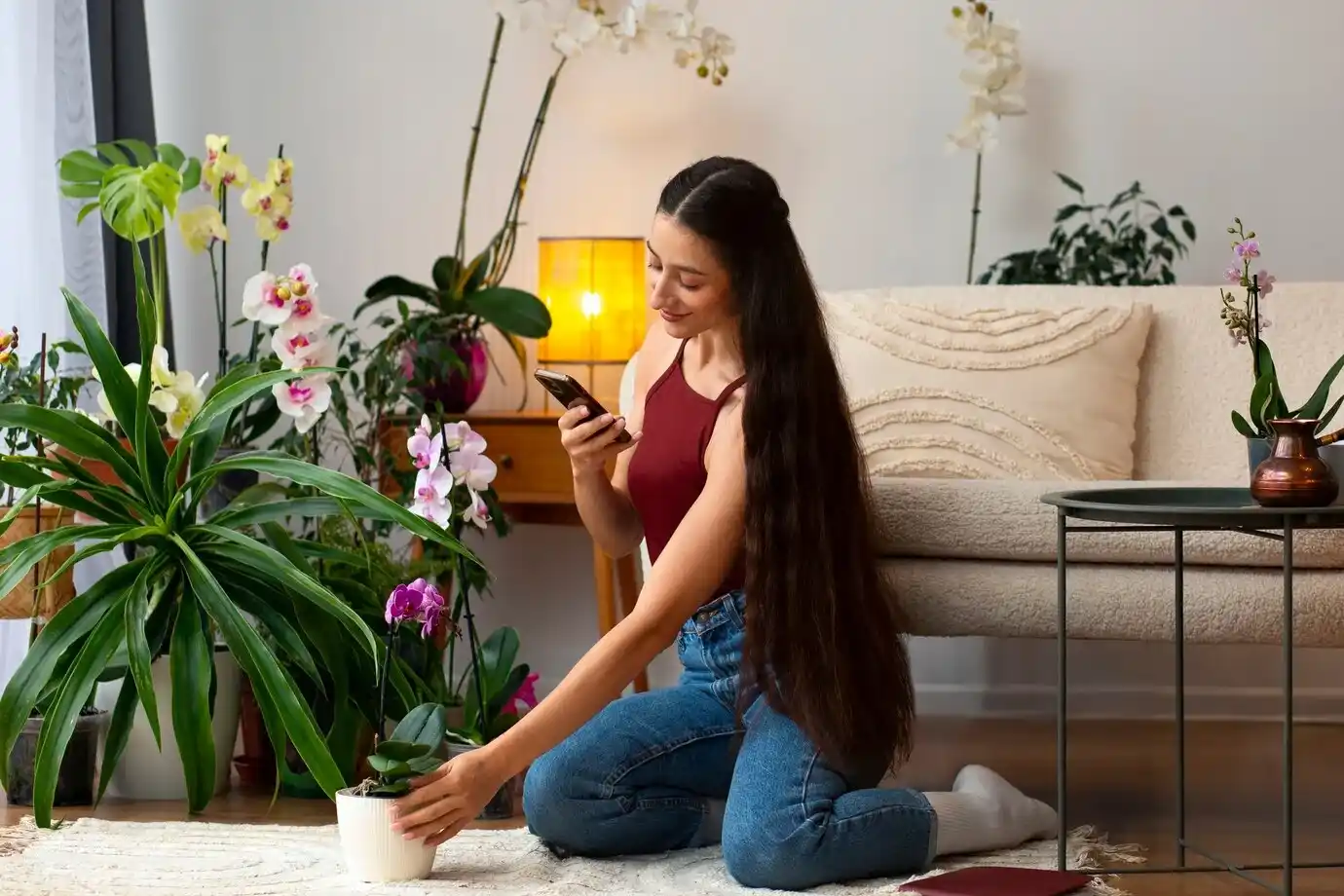Decorating a new space can be an exciting yet daunting task. The choices you make will shape your environment and significantly impact your well-being. Understanding the psychology behind interior design can help you create a space that not only looks beautiful but also feels right. Here, we explore how to harness the power of color, spatial arrangement, personal touches, and lighting to design a home that promotes comfort and happiness.
The Power of Color
Color is one of the most powerful tools in interior design. It can evoke emotions, set the mood, and even influence behavior. Leatrice Eiseman, Executive Director of the Pantone Color Institute, states, “Color psychology plays a vital role in interior design. Understanding how colors affect our mood and emotions can help you create a space that promotes well-being and reflects your personality.”
Choosing the Right Colors
- Blue: Often associated with calmness and serenity, blue is a great choice for bedrooms and bathrooms.
- Green: Symbolizing nature and renewal, green can create a restful and balanced atmosphere, perfect for living rooms and offices.
- Yellow: Known for its cheerful and energizing effects, yellow can brighten kitchens and dining areas.
- Red: Stimulating and passionate, red works well in social spaces like dining rooms but should be used sparingly in bedrooms.
When I moved into my first apartment, I painted my bedroom a soft blue. Every time I walked in, I felt an immediate sense of calm, which was exactly what I needed after a busy day.
The Importance of Spatial Design
The arrangement of furniture and objects within a space can significantly impact how we feel and behave. Sally Augustin, an environmental psychologist, explains, “By considering the psychology of spatial design, you can create environments that foster relaxation, productivity, or social interaction.”
Creating Functional Spaces
- Open Layouts: Open spaces can enhance social interaction and make small areas feel larger.
- Defined Zones: Clearly defined areas for different activities (e.g., a reading nook or a dining corner) can help in organizing the space and making it more functional.
- Flow: Ensure that there is a natural flow in the arrangement of furniture. Avoid placing large pieces in pathways.
When I reorganized my living room, I created a cozy reading nook by the window with a comfortable chair and a small bookshelf. This small change turned an unused corner into my favorite spot in the house.
Personal Touches Matter
Your home should reflect your identity and values. Incorporating meaningful objects and personal touches can create a space that feels truly yours. Nate Berkus, an interior designer, emphasizes, “The way we decorate our homes reflects our identity and values. Incorporating meaningful objects and personal touches can create a space that feels truly yours.”
Adding Personal Elements
- Photographs and Art: Displaying photos of loved ones and art that resonate with you can make your space feel more personal and inviting.
- Heirlooms and Souvenirs: Incorporate items that have sentimental value, such as family heirlooms or souvenirs from your travels.
- DIY Projects: Handmade items add a unique touch and a sense of accomplishment.
In my home, I have a gallery wall filled with photos from my travels and art pieces I’ve collected over the years. Each piece tells a story and brings a smile to my face every time I see it.
The Role of Lighting
Lighting is often overlooked but plays a crucial role in setting the mood. Bobby Berk, an interior designer, says, “Lighting is often overlooked but plays a crucial role in setting the mood. Experiment with different lighting options to create various atmospheres within your home.”
Layering Lighting
- Ambient Lighting: General lighting that illuminates the entire room, such as ceiling fixtures.
- Task Lighting: Focused lighting for specific tasks, like reading lamps or under-cabinet lights in the kitchen.
- Accent Lighting: Decorative lighting that highlights certain areas or objects, such as spotlights on artwork.
When I switched my harsh overhead light for a mix of floor lamps and table lamps in the living room, the space instantly felt warmer and more inviting.
Balancing Functionality and Aesthetics
Emily Henderson, an interior designer, stresses the importance of balance in interior design: “Combining functional and aesthetic elements will create a space that is both beautiful and practical.” A well-designed space should not only look good but also serve your daily needs.
Practical Tips for Balancing Design
- Multi-Functional Furniture: Choose pieces that offer storage or can serve multiple purposes, like a sofa bed or a coffee table with drawers.
- Declutter Regularly: Keep your space organized by regularly purging items you no longer need.
- Comfort: Prioritize comfort in your choices. A beautiful chair isn’t much use if it’s uncomfortable to sit in.
After decluttering my home office and investing in a comfortable, ergonomic chair, I found that my productivity and mood improved significantly.
Creating a Sanctuary
A home should be a sanctuary where you can unwind and recharge. Joanna Gaines, an interior designer, says, “A home should be a sanctuary. Creating a space that feels warm, inviting, and personalized is essential for mental and emotional well-being.”
Making Your Home a Sanctuary
- Soothing Colors and Textures: Use calming colors and soft textures to create a relaxing environment.
- Plants and Nature: Incorporate plants to bring a touch of nature indoors. They can improve air quality and add a sense of tranquility.
- Comfortable Seating: Ensure you have comfortable seating areas where you can relax.
I added several plants to my living room, and not only do they look great, but they also make the space feel more alive and peaceful.
Expert Insights
Several experts offer valuable insights into the psychology of decorating:
- Leatrice Eiseman: “Color psychology plays a vital role in interior design. Understanding how colors affect our mood and emotions can help you create a space that promotes well-being and reflects your personality.”
- Sally Augustin: “The arrangement of furniture and objects within a space can significantly impact how we feel and behave. By considering the psychology of spatial design, you can create environments that foster relaxation, productivity, or social interaction.”
- Joanna Gaines: “A home should be a sanctuary. Creating a space that feels warm, inviting, and personalized is essential for mental and emotional well-being.”
- Nate Berkus: “The way we decorate our homes reflects our identity and values. Incorporating meaningful objects and personal touches can create a space that feels truly yours.”
- Emily Henderson: “Balance is key in interior design. Combining functional and aesthetic elements will create a space that is both beautiful and practical.”
- Bobby Berk: “Lighting is often overlooked but plays a crucial role in setting the mood. Experiment with different lighting options to create various atmospheres within your home.”
Research and Studies
Several studies provide valuable insights into the psychology of decorating:
- Journal of Environmental Psychology: Research on the relationship between people and their environment, including the psychological impact of interior design.
- American Psychological Association (APA): Studies on the effects of the environment on human behavior and well-being, including color psychology, spatial design, and home environments.
- National Institute of Standards and Technology (NIST): Research on building science and human factors, which can inform the design of comfortable and functional living spaces.
- Consumer Reports: Studies on home furnishings and decor, offering data on how consumers choose products and create their living spaces, providing indirect insights into consumer psychology.
Conclusion
Decorating your new space is more than just arranging furniture and choosing colors; it’s about creating an environment that reflects your personality and promotes well-being. By understanding the psychology behind interior design, you can make informed choices that enhance your home’s comfort, functionality, and aesthetic appeal. Whether you’re moving into your first apartment or transforming your family home, these principles can help you create a space that truly feels like home.





